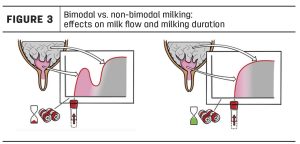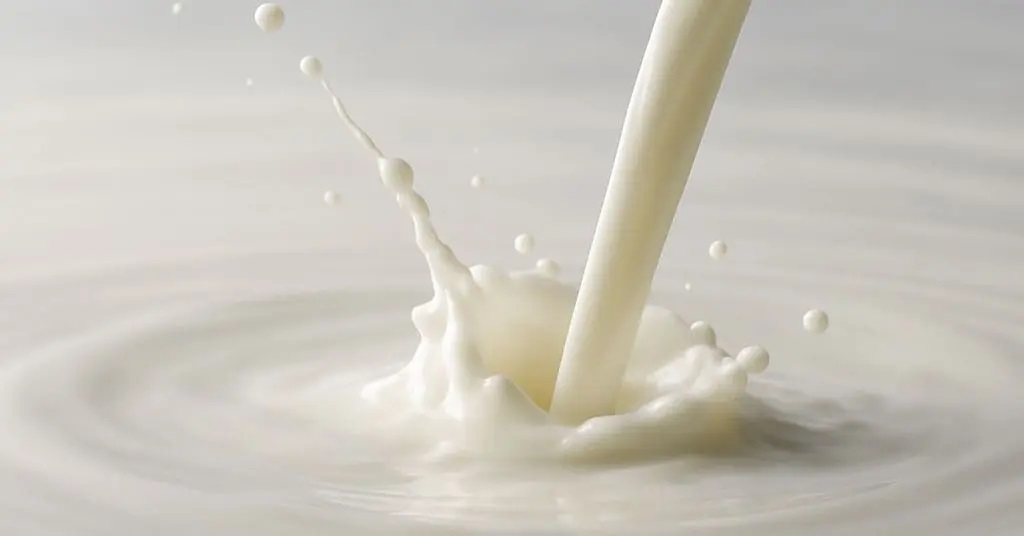
President Trump has announced a series of reciprocal tariffs, scheduled to start over the next few days, on some of agriculture’s most significant trade partners. The outcomes could be a net positive for dairy producers, some industry members say.
President Donald Trump unveiled a series of tariffs on Wednesday afternoon during his “Make America Wealthy Again” event in the White House Rose Garden.
Using his International Emergency Economic Powers Act authority, he announced the U.S. will impose a 10% tariff on all countries that will take effect April 5, 2025, at 12:01 a.m. EDT.
President Trump will also impose an individualized reciprocal higher tariff on the countries with which the U.S. has the largest trade deficits to take effect April 9, 2025, at 12:01 a.m. EDT. All other countries will continue to be subject to the original 10% tariff baseline.
During the event, which was broadcast live across the U.S. and abroad, President Trump held up a chart showing specific countries in line for what he described as reciprocal tariffs.
“ We will charge them approximately half of what they are — and have been — charging us,” he said. “So, the tariffs will not be a full reciprocal. I could have done that, I guess, but it would have been tough for a lot of countries.”
Dairy Industry Weighs In On Announcement
Gregg Doud, President and CEO of the National Milk Producers Federation, said the Executive Order provides more clarity on the administration’s approach to reciprocal tariffs and could be a net positive for U.S. dairy producers.
“Tariffs can be a useful tool for negotiating fairer terms of trade,” Doud said, in a prepared statement. “To that end, we are glad to see the administration focusing on long-time barriers to trade that the European Union and India have imposed on our exports. The administration has rightly noted both countries’ penchants for restricting sales of American products.
“In fact, 20% reciprocal tariffs are a bargain for the EU considering the highly restrictive tariff and nontariff barriers the EU imposes on our dairy exporters,” Doud added. “If Europe retaliates against the United States, we encourage the administration to respond strongly by raising tariffs on European cheeses and butter. We also appreciate the president’s recognition of the sizable barriers facing U.S. dairy exports into the Canadian market.”
Krysta Harden, president and CEO of the U.S. Dairy Export Council, gave added perspective on the new tariffs being rolled out, specific to the European Union and India.
“A firm hand and decisive approach to driving changes is most needed with the European Union and India to correct their distortive trade policies and mistreatment of American agriculture including both imbalanced tariff barriers and nontariff choke-points such as the misuse of Geographical Indications to block sales of our cheeses,” she said, in a prepared statement.
Both Harden and Doud noted that the majority of U.S. trading partner relationships for dairy are positive ones. “This includes many of the countries that will see higher tariffs imposed on them,” Harden said. “We encourage the administration to work swiftly with these constructive partners to negotiate new trading terms that expand opportunities for U.S. exports and secure the elimination of both tariff and non-tariff barriers.”
A partial list of the countries Trump highlighted during his remarks and the tariff percentages to be imposed include:
- China – 34%
- European Union – 20%
- Vietnam – 46%
- Taiwan – 32%
- Japan – 24%
- India – 26%
- South Korea – 25%
- Thailand – 36%
- Switzerland – 31%
- Indonesia – 32%

Grain Growers Brace For More Financial Pain
Potentially caught in the middle of the new tariff battles are those farmers who produce grain and cattle. That describes Chase Dewitz, who weighed in on the tariffs on Wednesday. His family operation includes more than 34,000 acres of pasture, row crops, 1,500 head of beef cows and a feedlot. His current concerns revolve around grain.
“I think there’s going to be some pain here for a while, and the biggest thing is these export markets. We have handed China to Brazil, and we’re just pushing them away more and more, and we’ve allowed this to happen,” said Dewitz, who is based in central North Dakota, near Steele.
During the 2018 trade war with China, U.S. agriculture experienced more than $27 billion in losses, according to the American Soybean Association.
The association says the U.S. has yet to fully recover its former market share of soybean exports to China, the world’s No. 1 buyer of the commodity.
“The policies of the last 30, 40, 50 years have just pushed this thing so far,” Dewitz said. “And without some major pain, I don’t know how you reset that.”
Other grain growers expressed similar nervousness about tariffs and declining optimism in the Purdue University-CME Group Ag Economy Barometer for March. Forty-three percent of the farmers surveyed cited shifting trade policy as the No. 1 driver of their negative outlook.
In addition, farmers were pessimistic about the outlook for the future of ag export markets, particularly for grain. Five-year expectations for U.S. exports reached an all-time low for the survey, according to James Mintert, the barometer’s principal investigator and director of Purdue University’s Center for Commercial Agriculture.
Dewitz said U.S. farmers want changes that will bring about fairer trade agreements but no one likes financial pain.
“Everyone says, ‘this needs to be fixed,’ and then on the backside they say, ‘as long as it doesn’t affect me,’” he said. “Well, it’s going to affect everybody.”
Listen to the full conversation with farmers on “AgriTalk” here: Farmer Forum – AgriTalk
You can now read the most important #news on #eDairyNews #Whatsapp channels!!!
🇺🇸 eDairy News INGLÊS: https://whatsapp.com/channel/0029VaKsjzGDTkJyIN6hcP1K

























